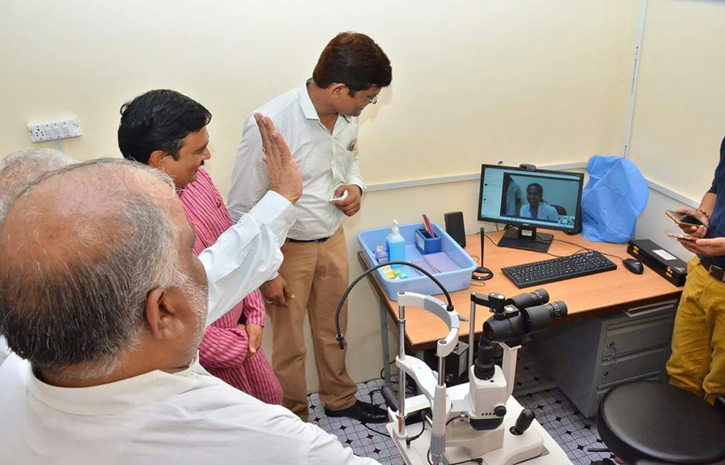Join a powerful, unprecedented alliance for better eye health for all.
Join IAPB-
Choose an alternate language here

Successfully establishing and managing vision centers is an area of interest for many Global Sight Initiative hospitals. Many mentors are working with their mentees to implement effective vision center strategies.
Mentor Aravind Eye Care System is working to establish relationships between their mentees to facilitate knowledge sharing and learning. They connected two mentees located in West Bengal, Netaji Eye Hospital and Rotary Hooghly Eye Hospital (RHEH). RHEH expressed interested in hearing about Netaji’s experiences in opening two vision centers. RHEH sent IT worker Mr. Subhojit Mukherjee and hospital manager Mr. Alaul Haque to Netaji to gain an understanding of their vision center set-up and management process.
Mr. Subhojit Mukherjee and Mr. Alaul Haque spent two days at Netaji visiting the new vision centers at Taldangra & Raghunathpur and having in-depth discussions about planning and operations. The discussions detailed the required backend and technology support from the base hospital as well as how to address local government regulations. In a further show of fellow-mentee support, Netaji’s general secretary, Mr. Himadri, identified a staff person to support RHEH’s preparation and filing of all necessary legal paperwork to establish a new vision center.
Because of the success of the initial cross-mentee learning experience, the relationship has extended further to include broader hospital improvements. RHEH chairman, Mr. Hiralal Yadav, requested that Mr. Himadri visit his hospital to help evaluate their challenges and collaborate on finding a number of human resources solutions.
Elsewhere in India, mentor Dr. Shroff’s Charity Eye Hospital (SCEH) is working to address service delivery challenges at vision centers. They first worked to identify three major challenges at vision centers:
1. Unnecessary referrals to a secondary center for another diagnostic opinion, leading to inconvenience for the patients and clogging service delivery at the secondary center
2. Patients not following-up on needed referrals to secondary centers
3. Statutory limitations on prescription of medicines at vision centers
SCEH has been feeling the effects of the challenges stated above at their network of 21 vision centers for quite some time. They identified one vision center, Raya, where they could pilot a solution to the above challenges.
They implemented a Skype-based telemedicine interface at Raya where doctors at the secondary center can converse with patients at the vision center. More importantly, doctors at the secondary center can fill out a prescription which can then be printed at the vision center.
To be linked to a secondary center via the Skype-based system, it will cost roughly $1,000 per vision center. Based on positive feedback from patients, and the relative cost-effectiveness of this solution, SCEH decided to implement a similar communication suite at each center. They will also undertake a research project to collect and analyze data on the effective use of this technology.
SCEH considers this a full paradigm shift in vision center eye care delivery and is looking forward to seeing this shift realized in the coming months. SCEH stated that “with this simple intervention, it can truly be said that a villager will have access to an ophthalmologist at the press of a button.”